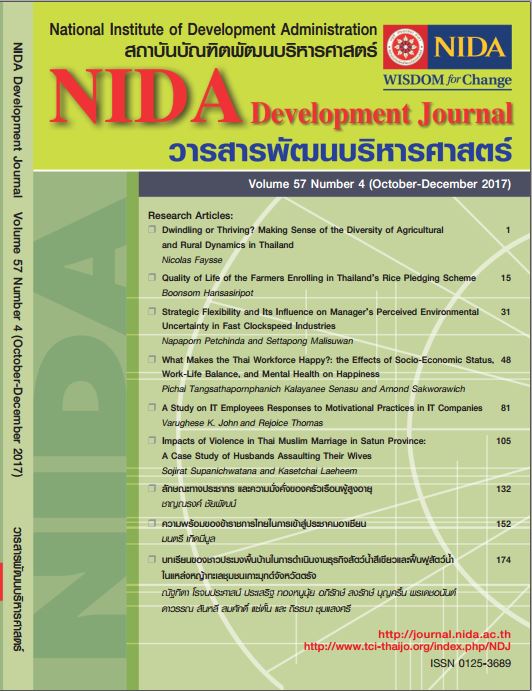Demographic Characteristics and Wealth of Aging Households
Main Article Content
Abstract
The demographic trend of Thailand is rapidly moving toward an aging society. While the birth rates decrease, the number of older population increases as well as the wealth inequality among aging households is high. This study aims to analyze the demographic characteristics and wealth of the aging households in Thailand employing the multinomial probit model and data from the 2013 SocioEconomic Survey (SES) provided by National Statistical Offce. By categorizing the aging households into 4 groups based on their wealth levels, the results indicate that there is a probability that the highest number of members aged lower than 15 years old is found in the poorest aging households, followed by those in the
medium to poor households, and in the medium to rich households. The number of members below 15 years old in the richest aging households is less than those in the medium to rich households. For the members aged between 60-70 years old, it is probable that the higher number live in the medium to rich aging households than in the poorest aging households and the medium to poor aging households. The fndings indicate that a growing population of newborns is more likely to be in the poorest and medium to poor aging households than the richest aging households.
Therefore, subsidies should be given to the poorest and the medium to poor aging households rather than to all groups of aging households equally. In addition, aging households with most income and expenditure tend to be in the richest aging households rather than the medium to rich households. Meanwhile, households with bachelor’s degree members have less possibility to be in the poorest aging households and the medium to poor aging households than the medium to rich aging households.

